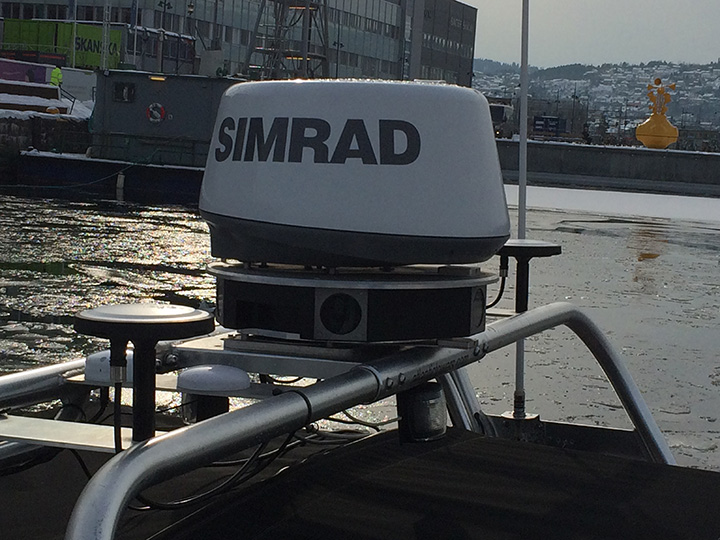Background
The Autosea project in colloboration with AMOS aims to build knowledge that enables autonomous collision avoidance for maritime surface vehicles. Target tracking is an important capability of autonomous vehicles moving in environments with traffic, as the autonomous vehicle needs to keep track of all other moving objects in its vicinity, and predict their future movement. Target tracking entails processing of data from various exteroceptive sensors, such as radar, lidar or camera. A main goal of the Autosea project is to include sensor fusion between active sensors (e.g., radar) and passive sensors (e.g., camera) as part of the collision avoidance system.

Scope
The goal of this project is to develop a system for fusion between a 360 camera rig and a radar onboard Maritime Robotics’ test vehicle Telemetron. The work will build upon a previous specialization project and master thesis on lidar-camera fusion.
Proposed Tasks for the 5th year project
- Conduct a literature study on publications which discuss fusion between active and passive sensors.
- Discuss how the different sensors can complement each other, and pros and cons of measurement-level and track-level fusion.
- Plan and arrange experiments where synchronized data are recorded from both the camera rig and the radar.
- Implement a multi-target tracking method on the recorded data. Several Matlab- and Python-based tracking methods are available, which can be extended to multi-sensor fusion.
- Write report.
Proposed Tasks for the master thesis
In the master’s project the focus will be on making a real-time fusion system, which can be integrated with the existing tracking software of the Autosea project, and tested during collision avoidance experiments.
Prerequisites
Required background knowledge:
- Experience in either Matlab, Python or C++.
- TTK4115 Linear System Theory.
- TDT4265 Computer Vision or TTK25 Computer Vision in Control (can be taken in parallell).
Useful, but not required, background knowledge:
- Additional courses in statistics, algorithms development and/or artificial intelligence.
- Experience with radar systems or machine vision.
This is a challenging but extremely important project. You must be comfortable with hardware and software to succeed with this project, which will contribute to define the standards for how autonomous vehicle are to perceive the world.
Autosea
The candidate will be associated with the AUTOSEA project, which is a collaborative research project between NTNU, DNV GL, Kongsberg Maritime and Maritime Robotics, focused on achieving world-leading competence and knowledge in the design and verification of methods and systems for sensor fusion and COLAV for ASVs. The project has access to supervision and physical test platforms through our industry partners.
Contact
Main supervisor: Edmund F. Brekke
Co-supervisors: Arild Hepsø (Maritime Robotics) and Kenan Trnka (Maritime Robotics)